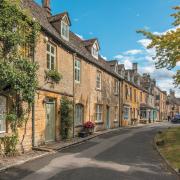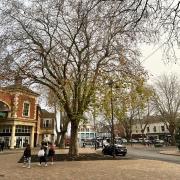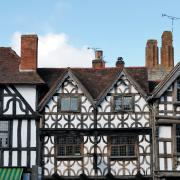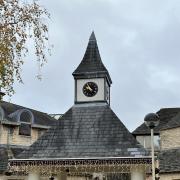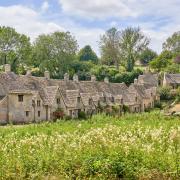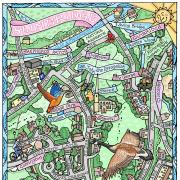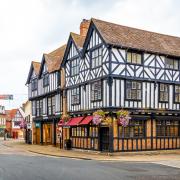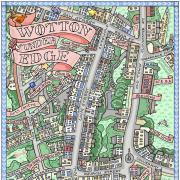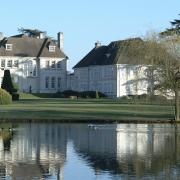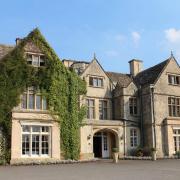The idyllic country home of William Morris reopens to the public
The doors of Kelmscott Manor, Oxfordshire, the beloved country home of William Morris (1834-96), has reopened to the public, having been closed since 2019.
The internationally-renowned craftsman, designer, author, poet, conservationist and pioneer socialist – widely regarded as the father of the Arts & Crafts Movement – believed Kelmscott to be ‘heaven on earth’, and we’d have to agree.
During the past 30 months, a major conservation and refurbishment programme has been achieved. Practical completion of the capital phase was made possible by a £4.3 million grant from the National Lottery Heritage Fund and £1.3 million raised to date from the still ongoing Kelmscott Manor: Past Present & Future Campaign, which continues to actively raise additional necessary funds.
Situated in the charming village of Kelmscott, located on the river Thames, near Lechlade, Kelmscott Manor was built around 1600 using mellow Cotswold stone. When William Morris first viewed Kelmscott Manor in 1871, he fell instantly in love with its unpretentious architecture, together with the history and landscape of its gentle rural environment. It encapsulated all his passions – history, nature, archaeology and romantic medievalism.

The Manor was duly rented, initially together with Morris’s friend and business partner the Pre-Raphaelite artist Dante Gabriel Rossetti as co-tenant, who was then romantically involved with Morris’s wife, Jane. Rossetti, however, left in 1874, much to Morris’s relief. From the outset it became the Morris family’s (William, Jane and their two daughters, Jenny and May) much-loved country retreat.
Aside from vital structural repairs to the 17th-century manor house and its historic farm outbuildings, a new learning and activity studio has been built on the footprint of a pre-existing thatched byre, recreating the enclosed farmyard; visitor facilities have been upgraded and improved, including new exhibition and research spaces created from rooms previously not open to the public; and significant furniture and artworks conserved.

Wallpaper has been reinstated in several rooms, with each design individually printed by hand using the original blocks from the Morris & Co archives. Many of the designs remain popular today, namely Fruit which is seen in Jane Morris’s bedroom, Lily in William Morris’s room, and Daisy on the landing.
In addition, analysis of long-hidden paint layers has provided clues to several of Morris’s different colour schemes. These have since been carefully re-mixed and the spaces repainted. For example, what was always referred to as The Green Room has now been repainted in its original, dark green (‘Brunswick Green’, the name given to a blend of Prussian blue and chrome yellow). This was a colour, which Morris found ‘restful to the eyes’.

Kelmscott played a huge part in Morris’s life. It provided him with endless creative inspiration and had a profound influence on his thinking and designs. It was at Kelmscott that Morris formulated his views on wide-ranging subjects, not just interior-design but also craft-based work, building conservation, social democracy and environmental issues.
SUBSCRIBE to Cotswold Life magazine for more historic places to visit in the Cotswolds.
Many of his most popular designs, such as Strawberry Thief, were directly inspired by the garden at Kelmscott, whilst his seminal literary work News from Nowhere, published in 1890, includes beautiful, perceptive descriptions of the house and its surroundings. The Kelmscott Press edition (1893), features the most famous illustration of the Manor as its frontispiece.

Even after Morris’s death in 1896, his widow Jane and his daughters May and Jane Alice continued to rent the Manor House, which was subsequently purchased together with its estate and additional land by Jane in 1913, shortly before her death in 1914. May Morris moved to Kelmscott permanently in 1923, and for the rest of her life devoted much of her time to the village and the Manor.
On May’s death in 1938, Kelmscott Manor was left to Oxford University. In 1962, Oxford University gave up the bequest, and ownership passed to the Society of Antiquaries of London, which undertook specialist repairs on the building to save it from collapse, before opening it to visitors for the first time. Since then, many thousands of people from all over the world have annually flocked to Kelmscott Manor, fascinated by the enduring legacy of William Morris.
Kelmscott Manor, Lechlade GL7 3HJ, kelmscottmanor.org.uk








